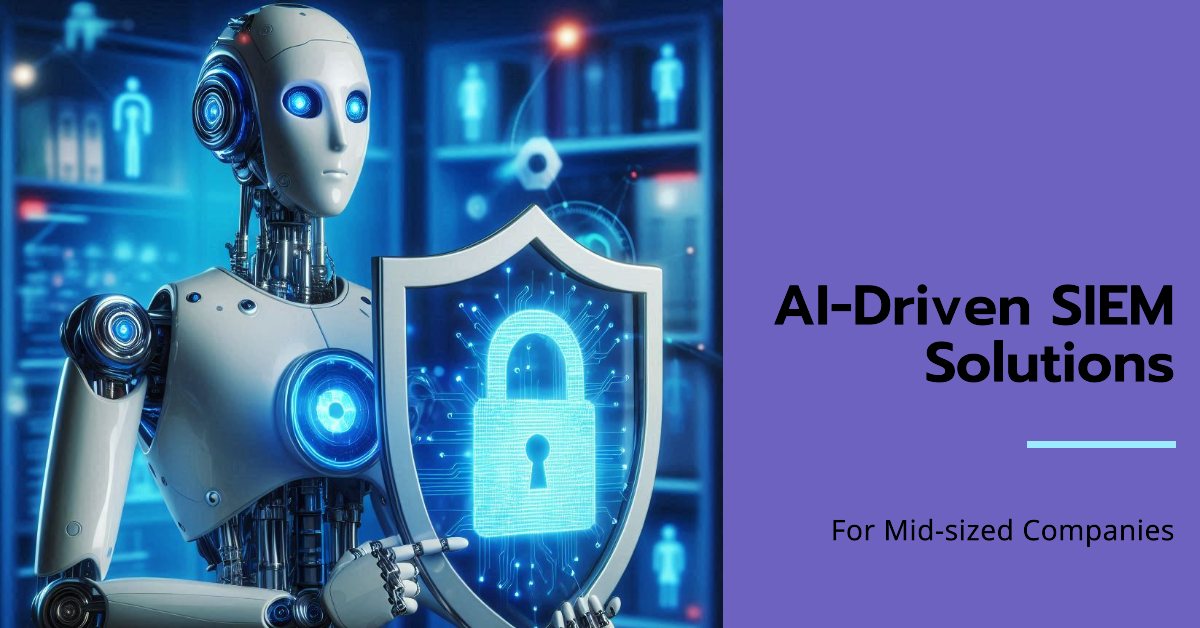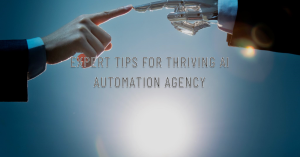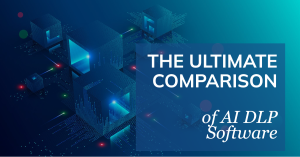Introduction
Mid-sized companies face increasing cybersecurity threats in today’s rapidly evolving digital landscape. Many are turning to Security Information and Event Management (SIEM) solutions to combat these threats effectively. SIEM systems provide real-time analysis of security alerts generated by applications and network hardware. With Artificial Intelligence (AI) integration, these systems have become even more powerful, offering advanced threat detection, predictive analytics, and automated response capabilities. This article explores the best AI-driven SIEM solutions tailored for mid-sized companies.
Why Mid-sized Companies Need AI-Driven SIEM Solutions
Mid-sized companies often operate with limited IT resources compared to larger enterprises. However, they face similar cybersecurity challenges, making it crucial to have robust security measures in place. AI-driven SIEM solutions offer several benefits:
- Advanced Threat Detection: AI enhances the ability to detect sophisticated threats that traditional methods might miss.
- Automated Response: AI can automate responses to specific threats, reducing the burden on IT teams.
- Predictive Analytics: AI can predict potential threats based on historical data and patterns.
- Scalability: AI-driven SIEM solutions can scale with the company’s growth, ensuring continued protection.
Top AI-Driven SIEM Solutions for Mid-sized Companies
1. Microsoft Sentinel

Microsoft Sentinel is a cloud-native SIEM solution that leverages AI to provide intelligent security analytics. It offers:
- Real-time threat detection: Machine learning is used to detect anomalies and potential threats.
- Automated response: Integrates with Microsoft’s security ecosystem to automate threat responses.
- Scalability: Easily scales with the growth of the company.
- User-friendly interface: Simplifies the management of security operations.
2. IBM Security QRadar

IBM Security QRadar is a robust SIEM solution with advanced analytics capabilities. Key features include:
- AI-driven threat detection: Utilizes AI to identify and prioritize threats.
- Integration with other IBM security tools: Enhances overall security posture.
- Customizable dashboards: Provides insights tailored to the company’s needs.
- Scalability: Suitable for mid-sized companies with growth plans.
3. Splunk Enterprise Security

Splunk Enterprise Security is famous for its comprehensive analytics and AI capabilities. Highlights include:
- Advanced threat detection: Uses AI and machine learning to detect and respond to threats.
- Customizable alerts: Allows for tailored security alerts based on specific criteria.
- Integration with various data sources: Enhances the ability to detect threats across different environments.
- Scalability: Designed to grow with the company.
4. AlienVault USM (from AT&T Cybersecurity)

AlienVault USM offers a unified security management approach, combining SIEM with other essential security tools. Features include:
- AI-driven threat detection: Identifies and responds to threats using AI.
- Unified platform: Combines SIEM, asset discovery, vulnerability assessment, and more.
- Ease of use: User-friendly interface suitable for mid-sized companies.
- Scalability: Can grow with the company’s needs.
5. LogRhythm

LogRhythm is a well-established SIEM solution with integrated AI to enhance its capabilities. Key features include:
- AI-driven analytics: Detects and responds to threats in real-time.
- User and Entity Behaviour Analytics (UEBA): Identifies behaviour patterns.
- Integration with various security tools: Enhances overall security posture.
- Scalability: Suitable for mid-sized companies planning to expand.
Choosing the Right SIEM Solution
When selecting an AI-driven SIEM solution, mid-sized companies should consider the following factors:
- Ease of Use: The solution should have a user-friendly interface and be easy to manage.
- Integration: It should integrate seamlessly with existing security tools and infrastructure.
- Scalability: The solution should be able to grow with the company.
- Cost: Consider the total cost of ownership, including licensing, implementation, and maintenance.
- Support and Training: Ensure the vendor provides adequate support and training resources.
How can I evaluate the scalability of a SIEM solution?
Evaluating the scalability of a SIEM solution is crucial to ensure it can grow with your organization’s needs. Here are some key factors to consider:
1. Performance Under Load
- Stress Testing: Conduct stress tests to see how the SIEM solution performs under heavy data loads. This helps determine if it can handle increased data volume as your company grows.
- Benchmarking: Compare the performance metrics of the SIEM solution against industry benchmarks to gauge its efficiency.
2. Data Handling Capacity
- Data Ingestion Rate: Check the maximum data ingestion rate the SIEM solution can handle. This includes the number of events per second (EPS) it can process.
- Storage Capabilities: Evaluate the solution’s data storage capabilities, including how it manages and archives large volumes of data.
3. Integration with Existing Systems
- Compatibility: Ensure the SIEM solution integrates seamlessly with your IT infrastructure and security tools.
- APIs and Connectors: Look for robust and pre-built connectors that facilitate easy integration with various data sources and third-party applications.
4. Elasticity
- Cloud vs. On-Premises: Cloud-based SIEM solutions often offer better scalability due to their elastic nature. They can dynamically allocate resources based on demand.
- Resource Allocation: Check if the solution can automatically scale resources up or down based on the current load.
5. Cost Considerations
- Pricing Model: Understand the pricing model of the SIEM solution—some solutions charge based on data volume, which can become expensive as your data grows.
- Total Cost of Ownership (TCO): Consider the long-term costs, including licensing, maintenance, and potential upgrades.
6. Vendor Support and Updates
- Support Services: Evaluate the vendor’s level of support, including response times and expertise.
- Regular Updates: Ensure the vendor regularly updates the SIEM solution to handle new types of threats and to improve performance.
7. User and Entity Behavior Analytics (UEBA)
- Behavioural Analysis: Check if the SIEM solution includes UEBA capabilities to identify and respond to behaviour patterns as your user base grows.
- Machine Learning: Look for machine learning features that improve threat detection accuracy over time.
8. User Experience
- Ease of Use: A scalable SIEM solution should have an intuitive interface that remains user-friendly even as the system grows more complex.
- Customizable Dashboards: Ensure the solution offers customizable dashboards that can adapt to your security team’s changing needs.
9. Case Studies and References
- Customer Testimonials: Look for case studies and testimonials from other mid-sized companies that have successfully scaled their SIEM solutions.
- Industry Reviews: Check industry reviews and analyst reports for insights into the scalability of different SIEM solutions.
Certainly! Stress testing an SIEM solution involves simulating high-load conditions to evaluate its performance and stability. Here’s an example of how you might conduct a stress test for a SIEM solution:
Example: Stress Testing a SIEM Solution
Objective:
To evaluate the performance and stability of the SIEM solution under high-load conditions.
Preparation:
- Define Metrics: Identify key performance metrics to monitor, such as:
- Events per second (EPS)
- CPU and memory usage
- Response time for queries and alerts
- Data ingestion rate
- Storage utilization
- Set Baseline: Establish a baseline by measuring the SIEM solution’s performance under normal operating conditions.
- Test Environment: Set up a controlled test environment that mirrors your production environment as closely as possible.
Steps:
- Simulate High EPS:
- Use a log generator tool to simulate a high volume of security events. Tools like Apache JMeter, Logstash, or custom scripts can be used.
- Gradually increase the EPS to simulate different load levels (e.g., 1,000 EPS, 5,000 EPS, 10,000 EPS).
- Monitor Performance:
- Continuously monitor the defined metrics using performance monitoring tools.
- Record CPU and memory usage, response times, and any errors or warnings generated by the SIEM solution.
- Evaluate Data Ingestion:
- Assess how the SIEM solution handles the increased data ingestion rate.
- Check for any delays or data loss during the ingestion process.
- Test Query and Alert Response:
- Execute complex queries and generate alerts during the high-load simulation.
- Measure the response time and accuracy of the queries and alerts.
- Storage Utilization:
- Monitor how the SIEM solution manages storage under high-load conditions.
- Ensure the solution can handle the increased data volume without running out of storage or significantly slowing down.
- Stress Duration:
- To observe long-term performance and stability, maintain the high-load conditions for an extended period (e.g., 24-48 hours).
- Analyze Results:
- Compare the performance metrics under high-load conditions to the baseline.
- Identify any performance bottlenecks, resource constraints, or stability issues.
- Report Findings:
- Document the stress test results, including any observed issues and recommendations for improvement.
- Share the findings with relevant stakeholders to inform decisions on scaling and optimization.
Tools for Stress Testing:
- Apache JMeter: An open-source tool for performance testing and load testing.
- Logstash: A data processing pipeline that can ingest, transform, and send data to the SIEM solution.
- Custom Scripts: Python or Bash scripts to generate log events and simulate high EPS.
Stress testing is essential to ensure that your SIEM solution can handle high-load conditions and scale with your organization’s growth. Following these steps, you can identify potential performance issues and make informed decisions to optimize your SIEM solution.
Conclusion
AI-driven SIEM solutions offer mid-sized companies a powerful tool to enhance their cybersecurity posture. By leveraging advanced threat detection, automated response, and predictive analytics, these solutions can help protect against evolving threats. Microsoft Sentinel, IBM Security QRadar, Splunk Enterprise Security, AlienVault USM, and LogRhythm are top choices for mid-sized companies looking to bolster their security measures. When selecting a solution, consider factors such as ease of use, integration, scalability, cost, and support to ensure the best fit for your organization.
I hope this article helps you understand the best AI-driven SIEM solutions for mid-sized companies. If you have any questions or need further assistance, feel free to ask!
Some links in this article may be affiliate links, meaning they could generate compensation to us without any additional cost to you should you choose to purchase a paid plan. These are products we have personally used and confidently endorse. It’s important to note that this website does not offer financial advice. You can review our affiliate disclosure in our privacy policy for more information.




